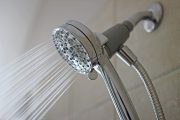(BPT) – There are many reasons that termites have gained the nickname “silent destroyers.” Five billion reasons, in fact.
Termites cause more than $5 billion in property damage in the U.S. each year. If left unchecked, they can silently chew through the structural stability of a home, eating away at wood, flooring and even wallpaper. To make matters worse, the damage they leave behind is not typically covered by most homeowners’ insurance policies.
How to spot termites
Spring is prime time for termite populations as they emerge in search of new structures to invade. Termite explorers, referred to as swarmers, will look for hospitable homes, and are particularly attracted to structures that may have sustained damage from severe winter weather or have dead or decaying wood on the property. Once these swarmers have determined a home to be a good fit, it’s likely that they will settle in and begin a new colony, growing into a full-blown termite infestation over time.
Termite or flying ant?
Many people will see termite swarmers in homes during the spring and mistake them for flying ants; this can end up being a costly mistake. Winged termites have a straight waist, straight antennae and their wings are equal in size. Flying ants, on the other hand, have waists that are pinched in the middle, bent antennae and two sets of wings, with the top set being larger than the lower. Termites are also most likely to swarm in the spring, while flying ants may swarm at various times of the year.
It is not always possible for an untrained eye to spot evidence of termites, but homeowners should keep a look-out for a few key signs that can help them identify a termite infestation.
Other signs of infestation
Mud tubes — Subterranean termites, the most destructive termite species, build mud tubes to provide moisture while they travel between their colony and food source. Mud tubes are most often found near the home’s foundation.
Wood damage — Termites tend to eat wood from the inside out, so wood that sounds hollow when tapped often signifies a termite infestation. Homeowners should also look for blistering pieces of wood.
Frass — Drywood termites produce wood-colored droppings as they eat through infested wood. If a homeowner finds a small pile of what looks like pellets inside or outside the home, it could be a sign of a drywood termite infestation.
It’s a good rule of thumb to have your home inspected for termites once every two to three years, and every year if you live in the south or in warmer climates. If termites are suspected, a pest control professional will be needed to eliminate the problem.
Top 10 termite prevention tips
The good news is that there are plenty of ways homeowners can help protect against termites, while in turn, protecting their greatest investment — their home. The National Pest Management Association (NPMA) offers this termite advice:
* Eliminate or reduce moisture in and around the home, which termites need in order to thrive.
* Repair leaking faucets, water pipes and exterior AC units.
* Repair fascia, soffits and rotted roof shingles.
* Replace weather stripping and loose mortar around basement foundation and windows.
* Divert water away from the house through properly functioning downspouts, gutters and splash blocks.
* Routinely inspect the foundation of a home for signs of mud tubes (used by termites to reach a food source), and wood that sounds hollow when tapped.
* Monitor all exterior areas of wood, including windows, doorframes and skirting boards for any noticeable changes. Remove dead trees and replace rotting wood.
* Maintain an 18-inch gap between soil or mulch and any wood portions of your home.
* Consider scheduling a professional inspection annually. Wood-boring insect damage is not covered by homeowners’ insurance policies.
* Store firewood at least 20 feet away from the house.
Termites cannot be controlled with do-it-yourself measures. If you suspect a termite infestation, contact a licensed pest control professional immediately to determine the extent of the problem and receive a recommendation of an appropriate course of treatment. To find a local, qualified pest professional, visit PestWorld.org.

